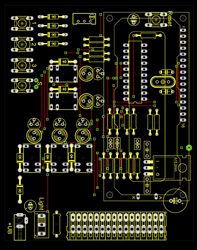Low-cost inkjet system for electronic circuit boards
Most people are familiar with the rigid printed circuit boards (PCBs) used in a plethora of electronic components. The plastic or fibreglass board itself is non-conductive. Conductive ‘wires’ typically made of copper are printed onto the board to connect the attached components into a functional electric circuit. The Flextronic project was initiated in response to increasing competition from the Asian printing market that has reduced the competitiveness of the European printing industry, in particular of European SMEs. EU-funded researchers set out to develop a novel and cost-effective laser-inkjet printing system enabling the printing of well-defined copper circuit tracks on flexible polymer and barium titanate films. Investigators successfully developed surface techniques for ultraviolet (UV) laser ablation of 10 different polymer and barium titanate films using an excimer laser. Furthermore, they formulated materials with viscosities suitable for use in inkjet printing and seeding on polymer films. Together with software controlling the laser and inkjet printing head, the Flextronic project produced a novel laser-inkjet hybrid system capable of printing copper circuit tracks on flexible films. Commercialisation of the results could have important impact on EU SMEs currently in the printing sector by enabling them to tap into the huge market for flexible printed circuits. In addition, many EU SMEs in the electronics sector could use the technology to improve the quality and functionality of the circuits they currently manufacture. Overall, Flextronic project outcomes have the potential to dramatically enhance the competitiveness of thousands of European SMEs while creating jobs and improving the quality, functionality and cost of consumer electronics.







